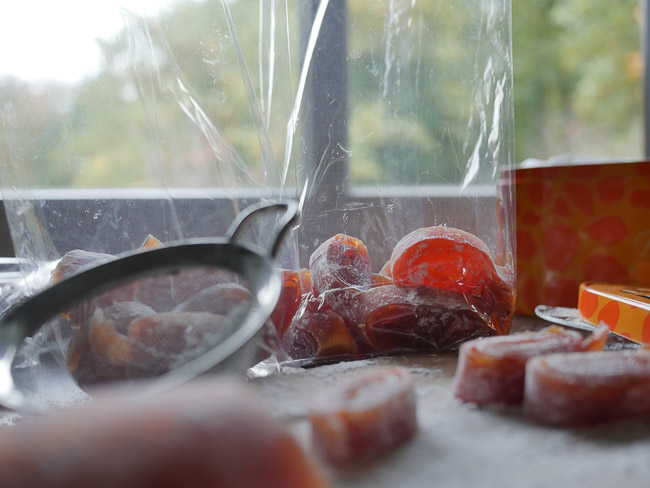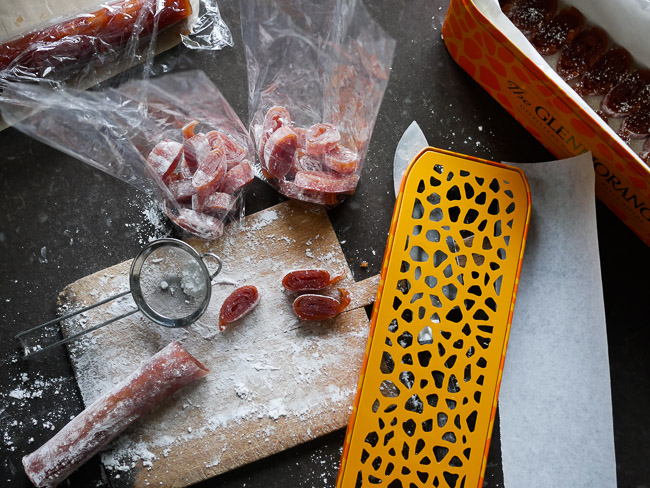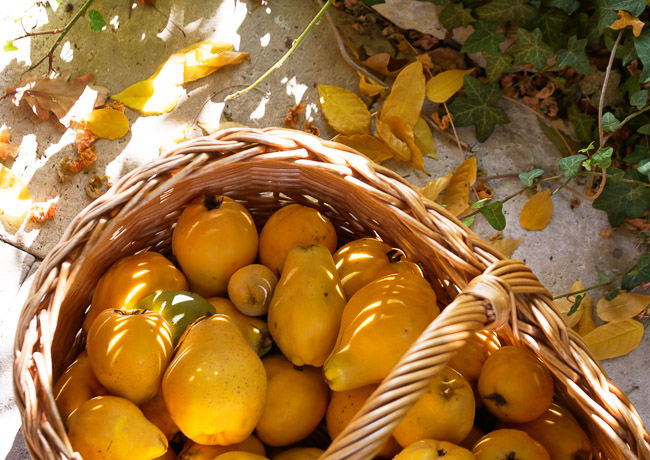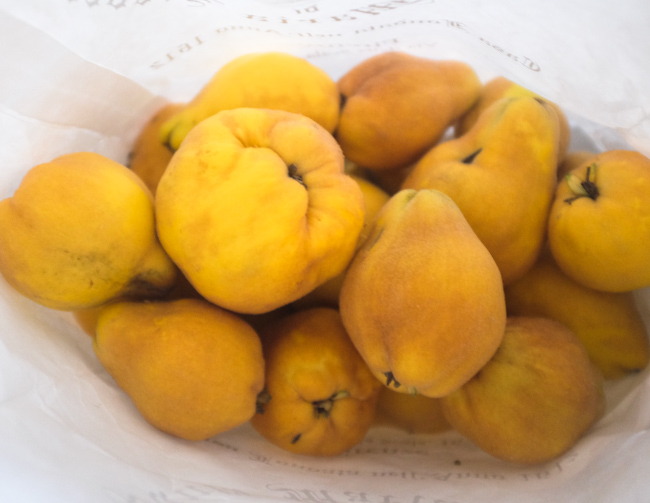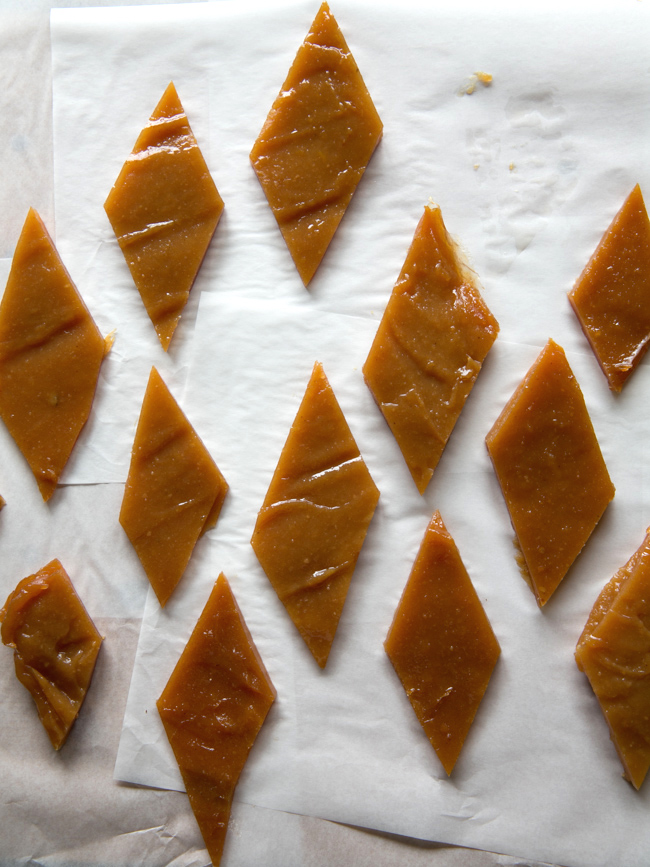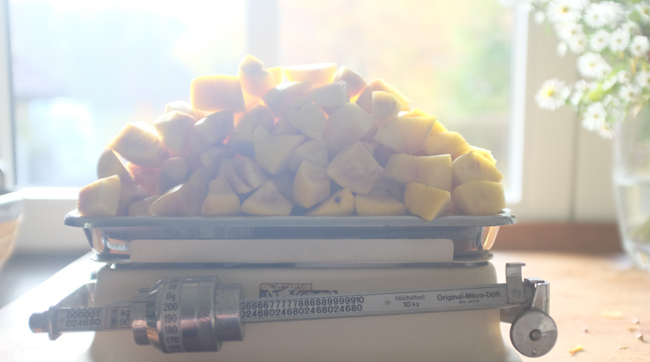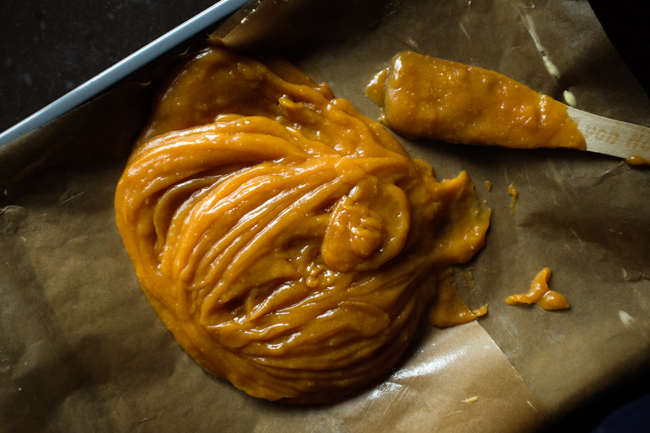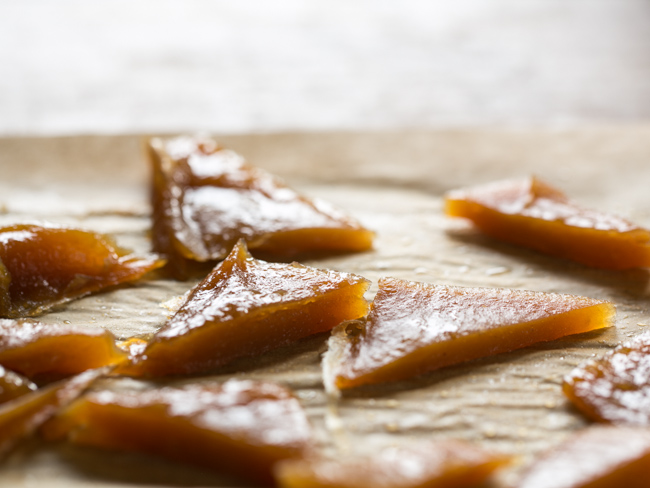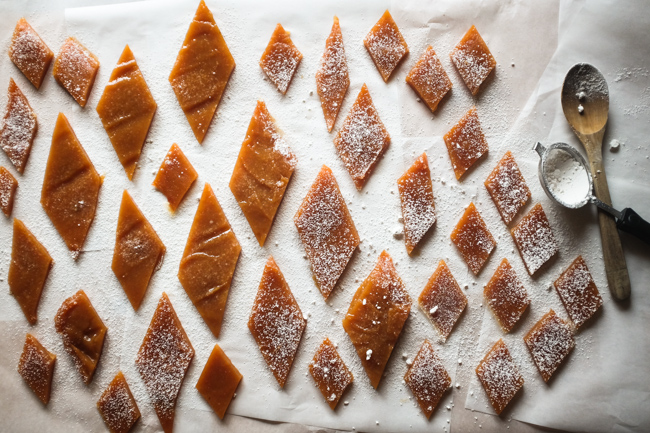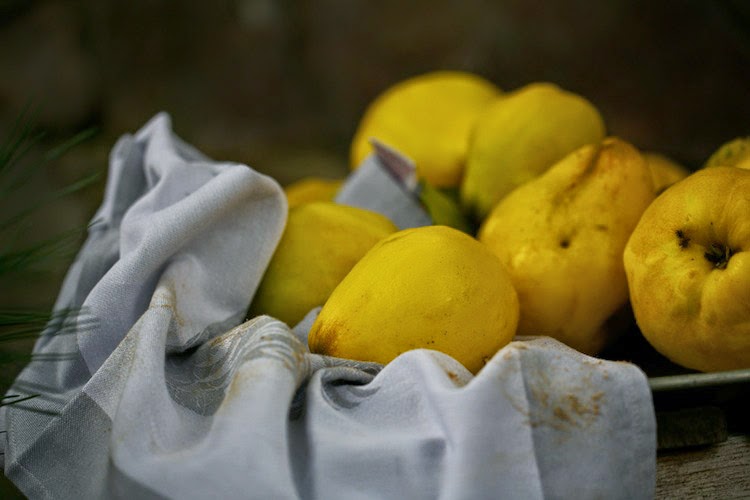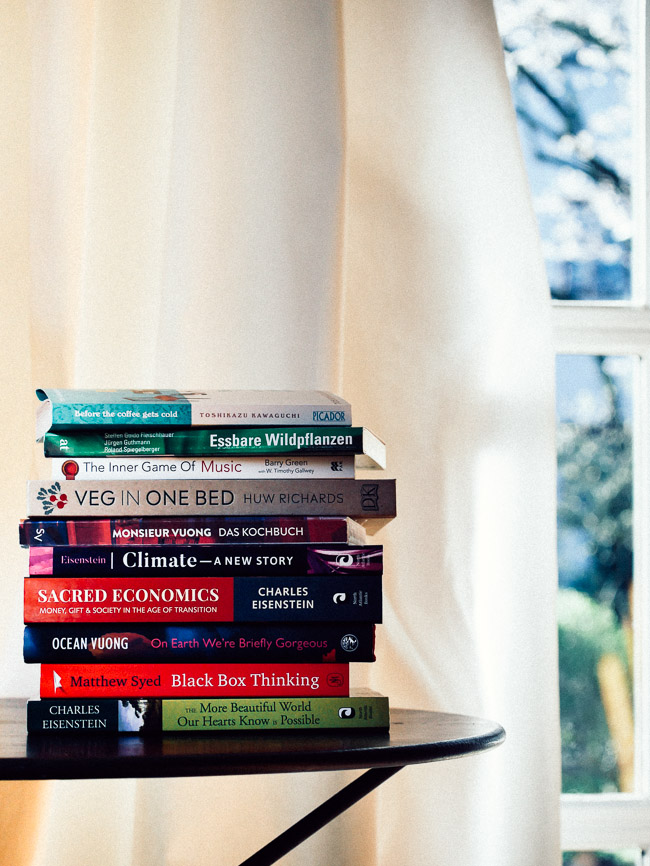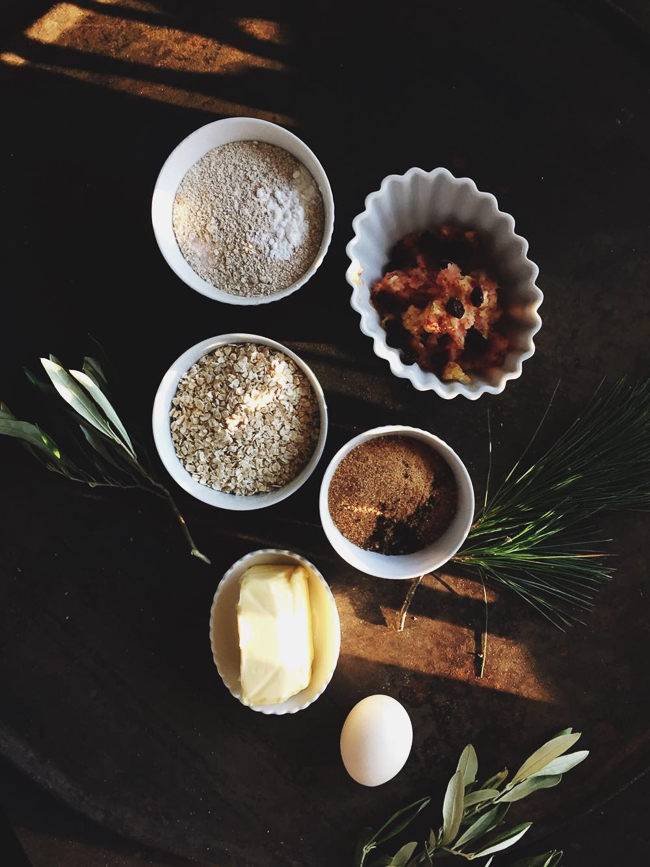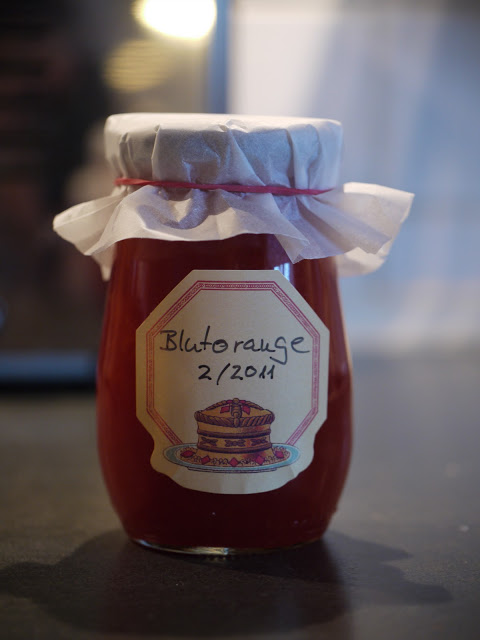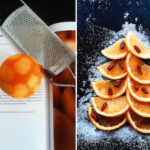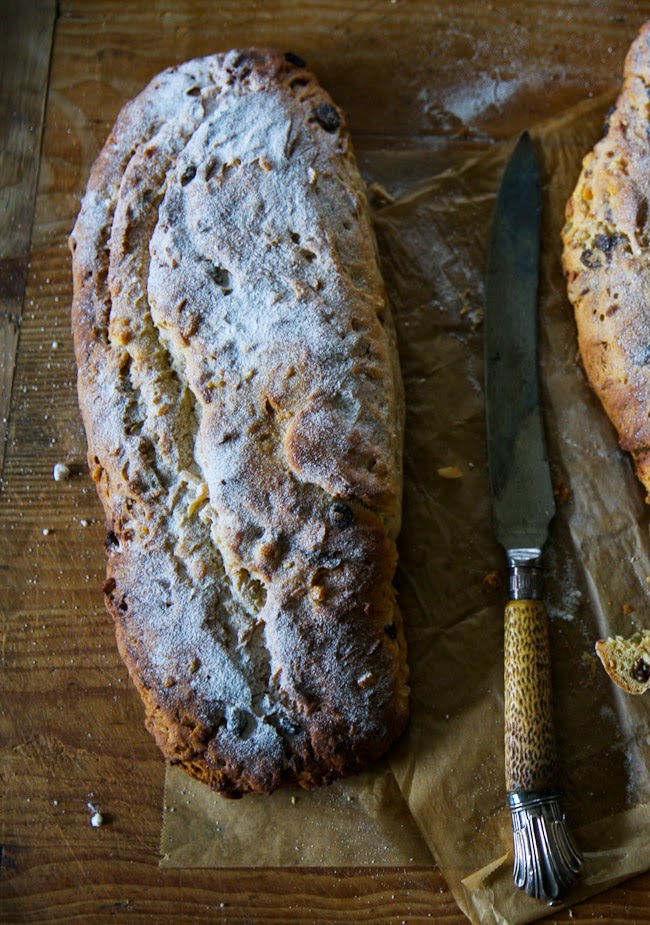Once the quince was sacred to Aphrodite, the goddess of love. In the garden of Hesperides it was called the Fruit of Paradise.
Quinces have a soft and furry coat. They are intensely fragrant and have no artificial substitute. They can’t be eaten raw and to handle them you need patience and a good knife. When cooked they change colour from yellow to dark orange.
Quinces make a wonderful jelly because they contain plenty of natural pectin.
Add spices, time to stir and time to dry …. you’ll be rewarded with a heavenly dulce de membrillo.
quince leather / Quittenbrot / dulce de membrillo
2 kg quince, washed, cored and chopped
about 750g – 1 kg sugar (exact amount you see after cooking and blending)
juice and peel of an organically grown lemon
1 vanilla pod, sliced
Put the quince into a heavy bottom pot, cover with water and set it over medium heat. Add the vanilla pod and the lemon peel. Bring to a boil, then turn the heat down and let it simmer until the quince pieces are fork tender. About 30 to 40 minutes.
Strain the water, discard the vanilla pod, but keep the lemon peel. Purée the quince pieces in a blender. Whatever amount of quince purée you have , you will need 3/4 of this amount in sugar.
Transfer the quince sauce back to the pot, add sugar and lemon juice. Over low heat simmer the sauce for another hour or two, stirring frequently.
Spread the thickened sauce on a parchment paper lined baking try. Smooth it out and let it dry in the oven at 55°C. You may leave the purée in the oven for 3-4 hours to dry it entirely. Another option is to leave the quince purée in the oven for only one hour and then forget it in a warm and airy place for some days.
If you happen to have a dehydrator, use it. It will turn the drying process into a true pleasure!
Cut the quince leather into squares and serve it the Spanish way with Manchego cheese.
autumn 2022 version:
